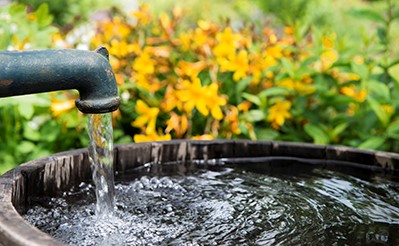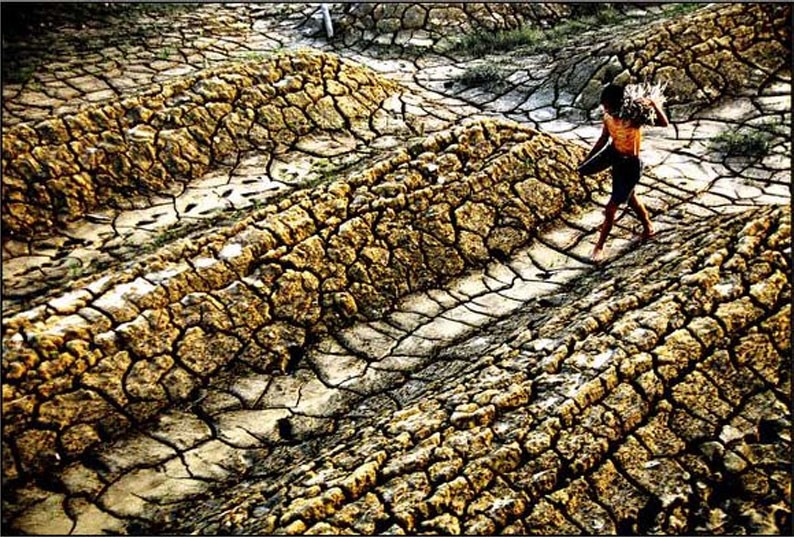Exploring the Complexities of Water and Agriculture

By Julia Byrd, Graduate Student in Civil and Environmental Engineering, Virginia Tech, Water INTERface IGEP Prgram
Many Americans would be surprised to hear that more than ten percent of households in the U.S were food insecure at some point in 2015. According the to the USDA 12.7 percent of households lacked access to enough food for a healthy life; this is actually an improvement to 2014[1]. On the global scale, food insecurity is even more prevalent. The World Bank estimates that the world needs to produce 50 percent more food by the year 2050, but climate change diminishes crop yields[2]. Furthermore, producing food requires a great deal of water, which is quickly becoming a scarce resource. How will we, as global citizens, deal with the complex issues of feeding a growing population? Who is responsible for ensuring that all people in every country of the world has access to food and water?
These are a few of the questions that were explored in the Water for Health seminar at Virginia Tech, Blacksburg, on a Tuesday afternoon in early September 2016. The students and faculty were from very different fields, including Civil and Environmental Engineering, Food Science and Technology, Human Nutrition, Foods and Exercise. They came together to explore some of the issues relating to water, human health, and the environment. We all have a diverse relationship with agriculture, some of us have a personal relationship to farming while others have an understanding of agriculture only in an academic setting, but we all understood that the food we eat is the product of farming and the agricultural industry. If eight of us in a classroom, all with different personal histories and academic fields, make this connection, can we assume that the rest of the population also comes to this conclusion? No, we cannot make the assumption that every person in the U.S and globally understands that everything they eat, or want to eat, or buy at the stores, grows in the ground on a farm somewhere in the world. Also, we have to emphasize that every step of this process, from growing, processing, and transporting to the store where we buy the food, requires water.

People need water for living, but we also need food for living, and that also requires water. But how much water is really needed to meet our nutritional needs? If some foods require more water than others, is it justified to cut off sectors of the agricultural industry that need high volumes of water and give those resources to sectors that can produce foods with less water? Some would argue that national governments should come together to decide that global water resources will be concentrated on a few certain, low water impact crops that will meet our basic health needs, rice and beans were used an example. If everyone around the world had equal access to rice and beans that could mitigate the water scarcity issue, alleviate world poverty, end starvation and food insecurity around the world. Even if rice and beans are not enough to provide the full spectrum of vitamins and nutrients that humans need to be very healthy, we can survive on these foods. Is it not better to keep more people alive even if their life span is shorter than what we experience today? Or should we continue to allow infants, children and impoverished people suffer and die from starvation?

We discussed this ethical dilemma in terms of the pros and cons of allowing governments to decide what foods will and will not be grown. The class participants were fairly split on this hypothetical situation; some students pointed out that this policy would also have enormous economic and social consequences. Millions of farmers, food producers, restaurants and grocery stores could go out of business. In this scenario the world would be left with a larger population, because fewer people die of starvation, but leaving many more people without an income or a substantially reduced income. Is that a fair trade off? Are we willing to give up consumers’ choice in deciding our own diets, in exchange for less water used for agriculture and fewer risks of food insecurity and starvation? Or is there another solution to the problem? Other students argued that it is better, in fact the just course of action, to limit consumers’ choice in order to meet their basic nutritional needs.
In an opinion paper, Jeff Simmons[1] argues that there is a better way to utilize modern technology in agriculture. Simmons frames his argument by recalling a tragic moment he had working in Brazil when a man who worked for him brought to Simmons’ door his two young daughters who were on the brink of starvation. Simmons says his eyes were opened to this great injustice, that food is much cheaper to buy in the U.S than in other, poorer countries around the world. Not only do many people in developing nations rely on an extremely low income, but they have to pay up to 80 percent higher food costs. Simmons argues that everyone is born with three basic human rights, the right to have food, the right to have choices, and the right to a healthy environment. Simmons’ solution to meetings these rights is to use modern technologies that are currently available, in global agriculture. Simmons argues that it is unjust that we have the capability to grow crops that are modified to need less water, less energy, and less space, and we are not doing so. Simmons presents data that says, contrary to popular arguments regarding genetically modified organisms, that people do not worry about modern technology uses in their food.

There are many ongoing debates about how we are to deal with a growing global population in the near future. More people in the world means a larger demand on earth’s resources, more demand for food, and more demand for commodities as well. Water is essential to human life, but it is also essential to other activities that are needed for humans as well, primarily food. How are we going to reconcile these issues without resorting to cutting off certain areas that do not have access to water sources, or cannot afford to pay for using other water sources. Solutions will only be reached when people, governments and global citizens, can agree on certain compromises. What are we willing to live without in our future?
[1] http://www.ers.usda.gov/publications/err-economic-research-report/err215.aspx
[2] http://www.worldbank.org/en/topic/foodsecurity/overview
[3] https://www.ncbiotech.org/sites/default/files/pages/Three-Rights-White-Paper-Revised.pdf


